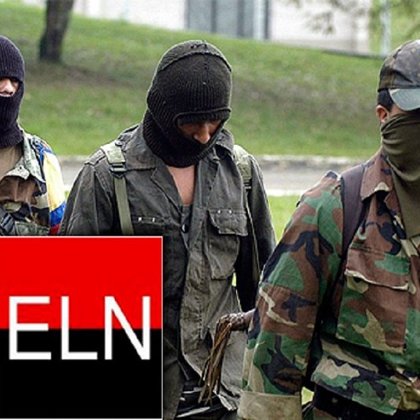THE COLOMBIAN ARMED FORCES CONFLICT OFFICIALLY FOUNDED IN 1960,RIGHT - WING PARAMILITARY GROUPS SINCE 1948,A FOUR - SIDED CIVIL WAR HAS RAGED IN COLUMBIA BRINGING MISERY AND DISPLACEMENT TO MILLIONS.THE COLOMBIA'S GOVERNMENT HAS BEEN SETTLED UPON IN PEACE AGREEMENT WITH FARC IN 2016.
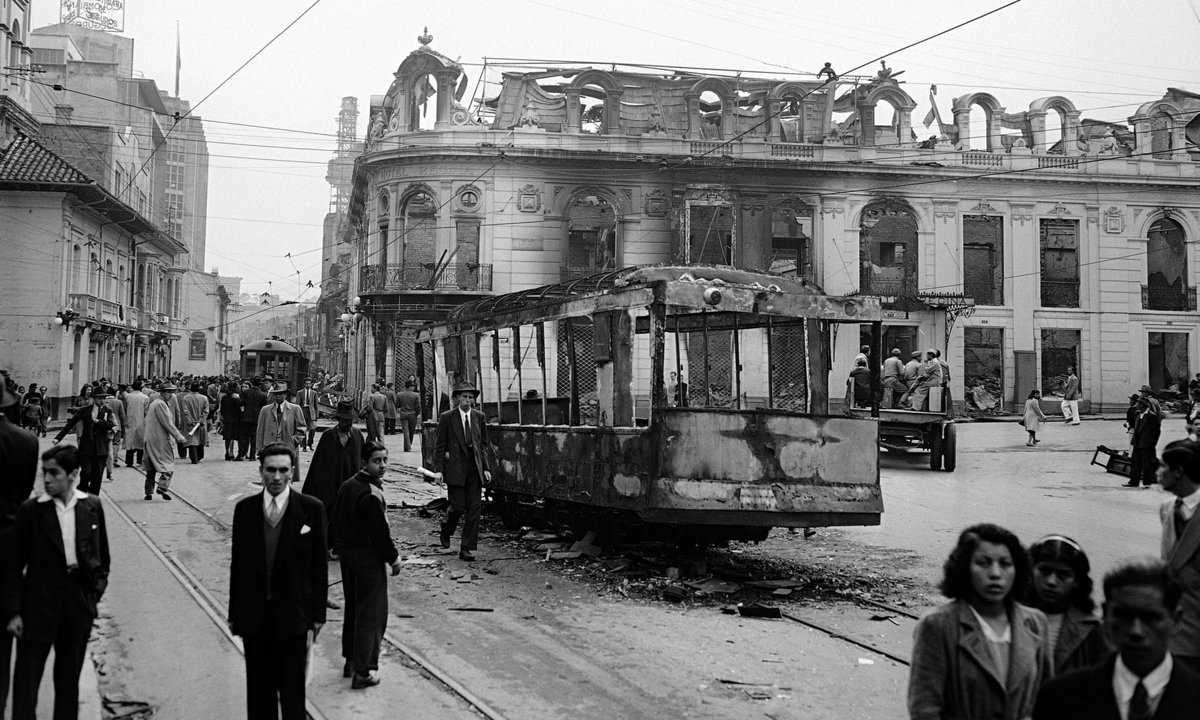 La violencia’ begins: a burned-out hotel in central Bogotá, April 1948, following the assassination of the populist leader Jorge Eliécer Gaitán.Colombia’s internal armed conflict dates back to the 1960s, when the country’s two main left-wing insurgencies, the Farc and the Eln, materialized. The government’s inability to control the groups led to private landowners’ creating their own right-wing paramilitary units in the 1990s. An umbrella organization for the paramilitaries, the United Self-Defense Forces of Colombia, or Auc, formed in 1997.
La violencia’ begins: a burned-out hotel in central Bogotá, April 1948, following the assassination of the populist leader Jorge Eliécer Gaitán.Colombia’s internal armed conflict dates back to the 1960s, when the country’s two main left-wing insurgencies, the Farc and the Eln, materialized. The government’s inability to control the groups led to private landowners’ creating their own right-wing paramilitary units in the 1990s. An umbrella organization for the paramilitaries, the United Self-Defense Forces of Colombia, or Auc, formed in 1997.
Despite being the oldest democracy in Latin America, Colombia has lacked national cohesion since its independence in 1810. As a result of the country’s three Andean mountain ranges - which act as natural barriers to integration - and the division of society by class interests, Colombia has historically suffered from a weak state with large areas of territory in which the government is unable to exercise effective control.The situation in Colombia has been fragile for more than 50 years.The FARC and the National Liberation Army (known by its Spanish acronym, ELN) were founded in the 1960s after a decade of political violence known as la Violencia (1948–58). Excluded from a power-sharing agreement that ended the fighting, communist guerrillas took up arms against the government. The FARC was composed of militant communists and peasant self-defense groups, while the ELN’s ranks were dominated by students, Catholic radicals, and left-wing intellectuals who hoped to replicate Fidel Castro’s communist revolution. The U.S. State Department has designated both groups as foreign terrorist organizations.Civil conflict in Colombia, in Latin America, has left as many as 220,000 dead, 25,000 disappeared, and 5.7 million displaced over the last half century. A peace process between the government and leaders of the Revolutionary Armed Forces of Colombia (known by its Spanish acronym, FARC), the country’s largest insurgent group, halted the violence in 2016. The process faces many challenges, including widespread public concern that the peace deal offers too much leniency to perpetrators of violence. But the deal’s backers are hopeful that the early phases of demobilization, which are already underway, will lead to a sustainable peace.The peace agreement calls for the FARC’s roughly seven thousand rebels to gather in twenty-three hamlets across the country and turn in their arms to a UN commission.The accord also outlines a plan for the military to clear landmines scattered throughout the countryside, which have killed or injured eleven thousand people over the last twenty-five years. Santos has appealed for international support to finance development, public services, and justice institutions in former conflict areas.Right-wing paramilitary groups with links to the state military emerged as landowners organized to protect themselves from the guerrilla groups. The largest paramilitary group, the United Self-Defense Forces of Colombia (AUC), was on the U.S. State Department’s list of foreign terrorist organizations .The group formally disbanded in 2006, but splinter groups, known as bacrim (short, in Spanish, for criminal gangs) remain.Right-wing paramilitary groups with links to the state military emerged as landowners organized to protect themselves from the guerrilla groups. The largest paramilitary group, the United Self-Defense Forces of Colombia (AUC), was on the U.S. State Department’s list of foreign terrorist organizations.The FARC and ELN long used violence, kidnappings, and extortion as sources of leverage and income. In one of its most high-profile kidnappings, the FARC abducted presidential candidate Ingrid Betancourt in 2002. The group held her along with three U.S.military contractors until 2008, when Colombian forces rescued them and twelve other hostages. Other notable incidents include the FARC’s assassination of a former culture minister in 2001 and its hijacking of a domestic commercial flight in 2002, during which rebels kidnapped a senator. Colombia’s National Center for Historical Memory estimates that guerrilla groups kidnapped twenty-five thousand people between 1970 and 2010. More than ten thousand people, including nearly four thousand civilians, have been killed or maimed by landmines, most of which were planted by the FARC, according to the Colombian government.In the early 2000s Colombia supplied as much as 90 percent of the world’s cocaine, and the production, taxation, and trafficking of illicit narcotics provided the FARC with much of its revenue. Right-wing paramilitary groups were also involved in the trade, fueling conflict as the groups competed for territory. In 2009, the U.S. government reported that the FARC was responsible for 60 percent of Colombian cocaine exported to the United States, and the U.S. Treasury Department froze the assets of several FARC members it identified as significant narcotics traffickers.Estimates of the income the FARC derives from the sale of narcotics vary In 2015, InSight Crime, an online publication that specializes in organized crime in Latin America and the Caribbean, estimated the figure between $150 and $500 million a year.Colombia’s defense minister, Juan Carlos Pinzon, said it could be as high as $3.5 billion.Coca cultivation fell by more than half , and Peru surpassed Colombia as the world’s leading cocaine producer. However, coca production is again on the rise in Colombia, with production levels nearly on par. Experts attribute this to the Colombian government’s decision to halt aerial spraying of coca crops due to health concerns, as well as moves by the FARC to encourage coca cultivation in hopes that greater cultivation would give them more leverage in rural development programs."The government programs will be in areas where there is coca, so one interpretation is that those who grow the most coca will get the most government benefits.
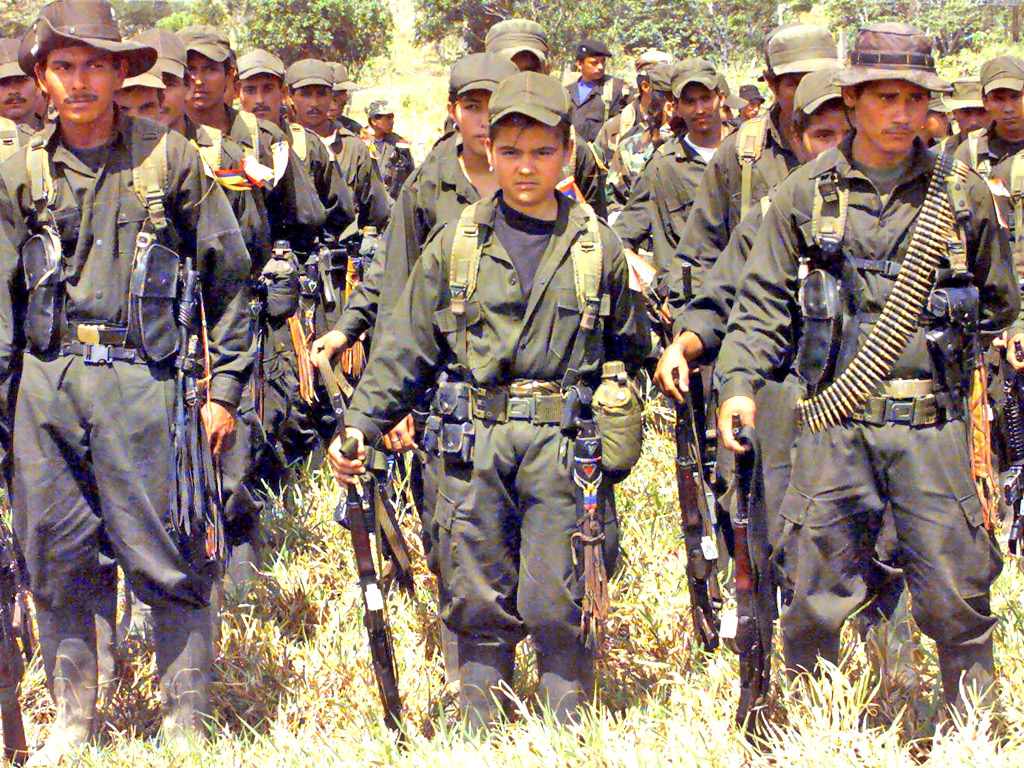 Child soldiers in the Revolutionary Armed Forces of Colombia, known as Farc, a major antigovernment guerrilla group that persistently makes the United Nations’ annual “shame list” for using children in armed conflicts.Two longstanding Colombian armed groups are cited in the United Nations secretary-general’s annual “list of shame” released this month, enumerating parties who use children in armed conflict, among other related human-rights abuses. The country’s two major antigovernment guerrilla groups, the Revolutionary Armed Forces of Colombia, or Farc, and the National Liberation Army (Eln), have persistently made the cut for violating children’s rights year after year.
Child soldiers in the Revolutionary Armed Forces of Colombia, known as Farc, a major antigovernment guerrilla group that persistently makes the United Nations’ annual “shame list” for using children in armed conflicts.Two longstanding Colombian armed groups are cited in the United Nations secretary-general’s annual “list of shame” released this month, enumerating parties who use children in armed conflict, among other related human-rights abuses. The country’s two major antigovernment guerrilla groups, the Revolutionary Armed Forces of Colombia, or Farc, and the National Liberation Army (Eln), have persistently made the cut for violating children’s rights year after year.
This savage war lasted 10 years, pausing briefly only to reignite, after counter-insurgency intervention by the US, in 1959 and the so-called Plan Lazo, which led to the creation of a paramilitary force, and in 1964 their opponents the Farc. Other guerrilla groups, including M-19, joined in. For four decades, the Farc, the army and paramilitaries claiming respectively to represent the peasantry and proletariat, the state and the landowning classes fought for terrain and terrorised and drove out those upon it as they advanced or retreated. Cooperation between the army and paramilitaries who later formed themselves into the AUC, or self-defence forces was assumed by their opponents. No one knows the actual death toll; estimates range from 70,000 in some US newspapers to 200,000.Many experts say that the Uribe administration’s crackdown laid the foundation for peace talks. By the time the FARC agreed to negotiations, in 2012, its ranks had fallen to some seven thousand members, down from sixteen thousand in 2001, according to government estimates. The group’s founder and leader, Manuel Marulanda, reportedly died of a heart attack in 2008, and military raids have claimed other high-ranking officials in recent years.The ELN, which operates mainly in northeastern Colombia, is estimated to have about two thousand members, down from as many as five thousand in the late 1990s. After several years of informal talks, the government of Uribe’s successor, Juan Manuel Santos, announced multiple times in 2016 that it would begin formal negotiations with the ELN, but the dialogue was delayed to early 2017. Many experts, citing continued kidnappings by ELN members, have questioned the group’s commitment to reaching a truce, and Santos’s government said that the ELN’s failure to release former lawmaker Odin Sanchez, who has been detained since April 2016, was the reason for postponing negotiations.The impact of the hostilities on children is one of the most disturbing facets of Colombia's internal armed conflict. Whether as a result of their direct participation as recruits of the illegal armed groups, or simply by being there at the wrong moment, playing in the wrong field, walking the wrong footpath or being members of threatened or displaced families, children account for a vast proportion of the victims to the conflict. The figures speak for themselves. As Rafael Santos Calderón points out, at least 6,000 boys and girls have joined the ranks of insurgent or self-defense groups as combatants. They are used as spies, message-bearers or human shields, or are sent on risky missions. Girls are subjected to sexual abuse and discrimination. One child is killed or crippled for life every five days by anti-personnel landmines or explosives left behind. An estimated 1,900,000 persons were forcibly displaced in Colombia between 1985 and 1999. Of them, 1,100,000, or 58%, were children.With the aim of gaining a deeper insight into the matter, and promoting the formulation of a public policy for children, the Convenio del Buen Trato, an organization made up by the Antonio Restrepo-Barco and Rafael Pombo Foundations, and El Tiempo Publishing House, organized two symposiums. The first one, The War's Children, was convened with the help of the Women for Education Group, and took place in August 2000. The second one, Children and Internal Displacement, was organized in collaboration with the Rafael Pombo Foundation and Save the Children - Sweden, and was held in March 2001. The Observatory of the Presidential Program for Human Rights and International Humanitarian Law of the Office of the Vice President of Colombia collected the presentations and published a book, Niñez y Conflicto Armado en Colombia , which is summarized in the following pages. By publishing the book, the Human Rights Program joins and encourages an initiative of civil society to search for solutions to one of the most complex and serious issues facing Colombia. As a matter of fact, protecting children from the armed conflict and dealing with its social, economic and psychological effects on them count among the highest priorities in the government's policies on children and human rights. The book is part of a collection that reflects, and is a result of common efforts of the government and civil society.In the preface, Rafael Santos Calderón, Chairman of the Convenio del Buen Trato, highlights the significance of the participation in these symposiums of the National Government, the NGOs, researchers, international bodies, and control agencies. "Only by sharing our experiences and knowledge will we be able to find solutions that allow us to overcome our difficulties", he writes. In his view, "the future of Colombian society and its institutions, and the chance of a lasting peace, will largely depend on the actions we take today to effectively care for children affected by the armed conflict, particularly the implementation of consistent, effectual public policies for the full protection of children's rights in the context of the armed conflict".
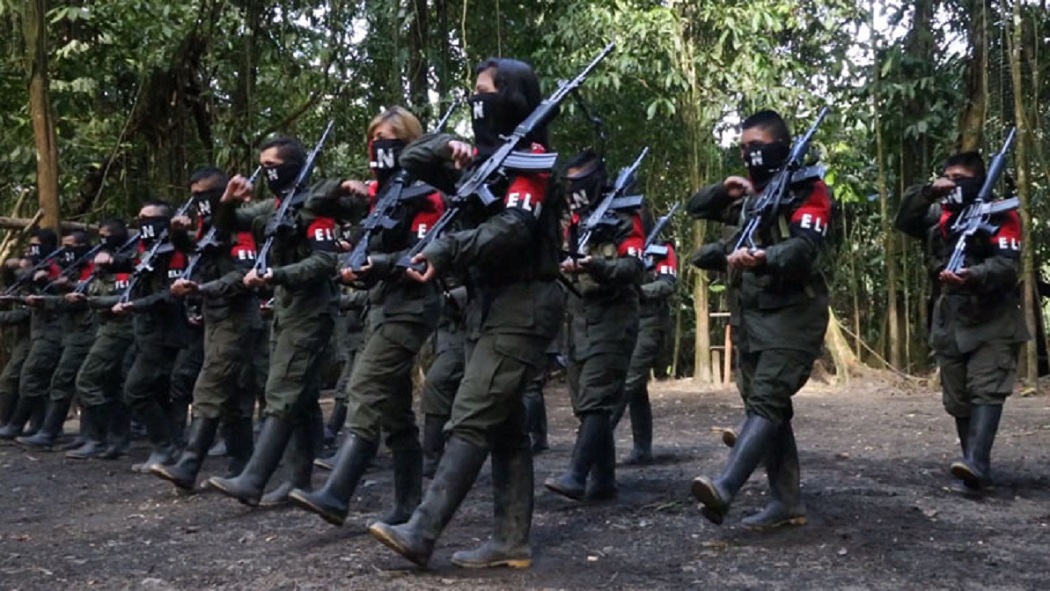 Colombia’s second largest rebels group, the ELN,following a lengthy tribute to ELN icon Camilo Torres, a scholar and priest who was killed by the military in combat on February 15, 1966,during recent, smaller shut-downs, guerrillas burnt down trucks and buses. The ELN urged the government to allow profound changes to Colombia’s economic model on the agenda of formal peace talks.
Colombia’s second largest rebels group, the ELN,following a lengthy tribute to ELN icon Camilo Torres, a scholar and priest who was killed by the military in combat on February 15, 1966,during recent, smaller shut-downs, guerrillas burnt down trucks and buses. The ELN urged the government to allow profound changes to Colombia’s economic model on the agenda of formal peace talks.
In the 1930s and 1940s, Colombia’s political system was dominated by two main parties: the Liberals and the Conservatives. These two blocks had starkly opposing ideas about how the country should be governed. Feelings ran particular high over the issue of land, which was highly unevenly distributed among the population in this period.While Liberals favored a degree of land reform and advance legislative proposals to this end, the Conservative Party believed redistribution of the country’s territory would destroy the economy. The more extreme of the Conservatives even argued that the Liberals’ comparatively modest reform proposals amounted to nothing less than a communist overhaul of the land ownership system.The dispute between these two sides over this and other issues became increasingly aggressive, creating a highly charged political environment. In this context, the murder of Liberal Party leader Jorge Eliécer Gaitán in Bogota in 1948 proved to be explosive. The assassination provoked mass rioting across the capital in which approximately half of the city destroyed. This was the first incident of a decade long period of violence, known simply as “La Violencia.Right-wing paramilitary groups with links to the state military emerged in the 1980s as landowners organized to protect themselves from the guerrilla groups. The largest paramilitary group, the United Self-Defense Forces of Colombia (AUC).The group formally disbanded in 2006, but splinter groups, known as bacrim remain.Analysing the Colombian conflict calls for a certain degree of commitment on the part of the researchers. This occasionally creating a danger for them: too much curiosity kills. One persistent research problem is that when explaining the way that the para-state organisations operate, normally only inchoate information can be found. However, with the consolidation of the nexus between national organisms and international institutions, more valuable information has been uncovered regarding the mechanisms they employed. The confessions of the head drugs traffickers and evidence divulged in the prosecutions against members of criminal organisations in the trials lead by the attorney general also provide us with leads. It is possible to work from information collected from official judicial reports of the paramilitary and drugs trafficking trials. The accused is rewarded with benefits for declaring their illegal activities, crimes and the massacres that they have participated in. These confessions are valuable for our analysis. Jorge , Mancuso, and Don Diego, all prosecuted in the United States under charges of drugs trafficking, gave details in their confessions that paint a more complete picture of their individual front's activities and paramilitary strategy employed over the last few decades.Generally, the sources used in recent research what are predominantly descriptive in character. However, in our case we have opted for using research initiated a decade ago, consisting in a referential mark based on argumentation theory, non-cooperative games and asymmetrical information. When argumentation techniques and rational structures are used to explain violence, it is demonstrated that the parastate organisations operated by forming coalitions in strategic territories for drugs production and trafficking. The aim of this project is to advance research of these new strands of the conflict. Relate para-statal groups, (AUC, paramilitaries, insurgents, criminal organizations) with a specific period of history in Colombia is common.. Conventional history, however, tend to cause violence originating in an uneven distribution of property, the feudal nature of the linkages between farmers and landowners in the late nineteenth century. A clear social and economic inequality,, which would be extended considerably with the lack of a solid political and institutional system. A distant ruling class was promoting extreme aggravation of political fanaticism that would have bipartisan violence of the 50s enduring one of its expressions.But if the Colombian insurgents in its confrontation with the State are discursively heir to nineteenth-century wars, this trial did not have the same force in the case of irregular clusters, such as self-defense and paramilitary forces during the second half of the twentieth century. These relate to a world determined by new values: consumption, crime and demographic concentration of urban poverty. As a mixture of components that provides opportunities for those who can show more power to negotiate and offer protection in areas where land conflicts are being intensively. This interpretation of suffering violence will shake if focuses on a guilty (the State) which in turn can isolate the causes of violence casually addressing the problem. These narrative units are offered as a means of justifying causes quite far from their origins. The emerging bands, paramilitary, guerrilla and criminal organizations have enough speech in favor of its strategic objectives. If suffering is seen as natural or without cause shall be considered a misfortune instead of injustice and produce resignation rather than rebellion. Therefore, mafia, guerrillas or paramilitaries claimed its causes in speeches that seek to prosecute, rather than assuming the status of perpetrators.It happened with the FARC from its origins in Marquetalia, with the AUC of Magdalena Medio, with the MAS (Death to Kidnappers), with the paramilitaries in Cordoba and Antioquia Urabá, with paramilitaries under Ramon Isaza and the Black Eagles under the command of Don Mario, every one of the main actors of the conflict is delivered to a discourse of guilt. Interpret the actions of their enemies as crimes, inserting an all-encompassing discourse on monstrosity of his actions. Outreach campaigns and territorial dominance, population displacement and destruction in the regions should be observed also by creating a myth that will help sustain the conspiracy.Demonizing its enemies and responsible for the atrocities of the war not only helped to neutralize the scruples to kill peasants and Indians ( ''guerrillas dressed in civilian clothes,'' said Jorge and Carlos Castaño). He allegedly also helped intensify recruitment for their cause. If the regions where groups did not operate in a limited way-orwith a legitimate presence of state agencies, the opportunity was unique to invoke the need for his presence, and the discipline imposed on populations. The enemy was seen as a destroyer of peaceful coexistence, the state as indifferent and insulated to the center. This was the condensation of their ideology. But the causes alleged hidden interest in the discourse of higher crime and criminal scope.
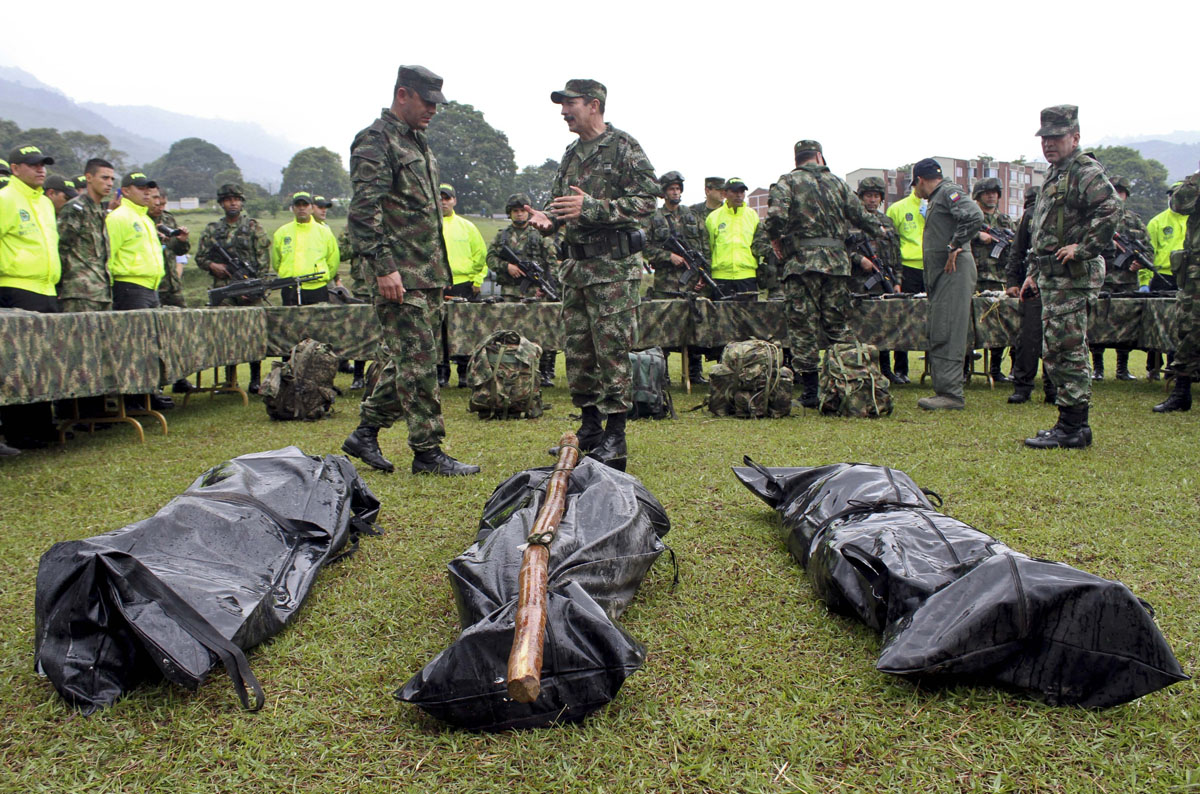 The FARC and ELN long used violence, kidnappings, and extortion as sources of leverage and income. In one of its most high-profile kidnappings, the FARC abducted presidential candidate Ingrid Betancourt in 2002. The group held her along with three U.S.military contractors until 2008, when Colombian forces rescued them and twelve other hostages. Other notable incidents include the FARC’s assassination of a former culture minister in 2001 and its hijacking of a domestic commercial flight in 2002, during which rebels kidnapped a senator. Colombia’s National Center for Historical Memory estimates that guerrilla groups kidnapped twenty-five thousand people between 1970 and 2010. More than ten thousand people, including nearly four thousand civilians, have been killed or maimed by landmines, most of which were planted by the FARC, according to the Colombian government.
The FARC and ELN long used violence, kidnappings, and extortion as sources of leverage and income. In one of its most high-profile kidnappings, the FARC abducted presidential candidate Ingrid Betancourt in 2002. The group held her along with three U.S.military contractors until 2008, when Colombian forces rescued them and twelve other hostages. Other notable incidents include the FARC’s assassination of a former culture minister in 2001 and its hijacking of a domestic commercial flight in 2002, during which rebels kidnapped a senator. Colombia’s National Center for Historical Memory estimates that guerrilla groups kidnapped twenty-five thousand people between 1970 and 2010. More than ten thousand people, including nearly four thousand civilians, have been killed or maimed by landmines, most of which were planted by the FARC, according to the Colombian government.
The largest, poorest and most violent barrio in the Colombian capital stretches into the haze up the mountainside as far as the eye can see. No one knows how many people live in the redbrick and pebble dash dwellings along the pitted streets of Ciudad Bolívar; estimates range from 700,000 to more than a million.Many of the barrio’s citizens arrived to occupy the land upon which they built their homes after being displaced, often more than once, by a four-sided war that has involved narco cartels, rightwing paramilitaries, the leftist guerrilla Revolutionary Armed Forces of Colombia (the Farc), and the government army. The conflict is the world’s longest continuous war, causing the internal displacement of around 5 million people. But these are momentous times for the country, as epic peace talks convene on neutral ground in Havana, determined, against the odds, to broker what for many has become an impossible dream of peace and with it some kind of justice.As Vice President Gustavo Bell-Lemus remarks in the foreword, by encouraging initiatives such as these symposiums, "the government seeks to obtain a clearer picture of the present situation, and establish the basic facts in order to be able to formulate an effective public policy on children, armed conflict and forced displacement". This is in line with President Andrés Pastrana's peace, Human Rights and IHL policies. From the beginning, his administration has been committed to achieving peace through a negotiated settlement of the armed conflict, and significant progress has been made in the negotiations with the FARC. Talks have been initiated with the ELN, although these are temporarily suspended.Armed, indiscriminate violence poses a formidable challenge to the peace process. Two factors are particularly aggravating, namely forced displacement of civilians and the activities of the illegal self-defense groups. Recognizing the seriousness of the situation, the government has adopted a Policy on Human Rights and International Humanitarian Law, within the framework of the Universal System of Protection of Human Rights. Under this policy, responsibility for dealing with human rights issues lays with the Vice President's Office.The protection of children affected by the armed conflict is one of the government's main preoccupations. However, as a survey conducted by the Rafael Pombo Foundation shows, there is widespread ignorance about what the authorities are doing in this regard. Although a lot remains to be done, mentioning a few achievements is quite appropriate here. Colombia has adopted the International Convention on the Rights of the Child -approved by Congress in 1991-, the Four Geneva Conventions of 1949, and the two Protocols additional to these Conventions. The Fourth Geneva Convention provides that children must enjoy especial protection, which is more explicitly regulated by the Additional Protocols, particularly in connection with the participation of minors in non-international armed conflicts. In compliance with these regulations, the government has set the minimum age for recruitment in the armed forces at eighteen, and most children under that age who were previously carrying out administrative tasks in low-risk areas have now been discharged. All armed groups taking part in the conflict do have the same obligation. With regard to children previously engaged in hostilities, the government has applied the existing legislation on the protection of children, and has also implemented programs for their rehabilitation and integration into society. Special programs have been introduced to provide support to children who have suffered sexual abuse and rape, which are described as infringements of international humanitarian law under the new Penal Code. In addition, the government has made the eradication of antipersonnel mines a priority. Furthermore, displaced children are the focus of special attention through the National Plan of Assistance to the Displaced Population of the Social Solidarity Network.The government is aware of the serious psychological and social consequences of the armed conflict, particularly for children who take direct part are forcibly displaced, or are otherwise affected by the hostilities. Therefore, it is convinced that, despite the economic difficulties facing the country, the funding of programs aiming at the social, economic and psychological recovery of children affected by the armed conflict must take priority. Also, we must encourage a greater coordination of efforts between the State, the civil society and the international community, in order to address these problems more effectively. The government is persuaded that it is indeed possible to find a negotiated solution to the conflict. It is our duty to build a better country for today's children, and for future generations.
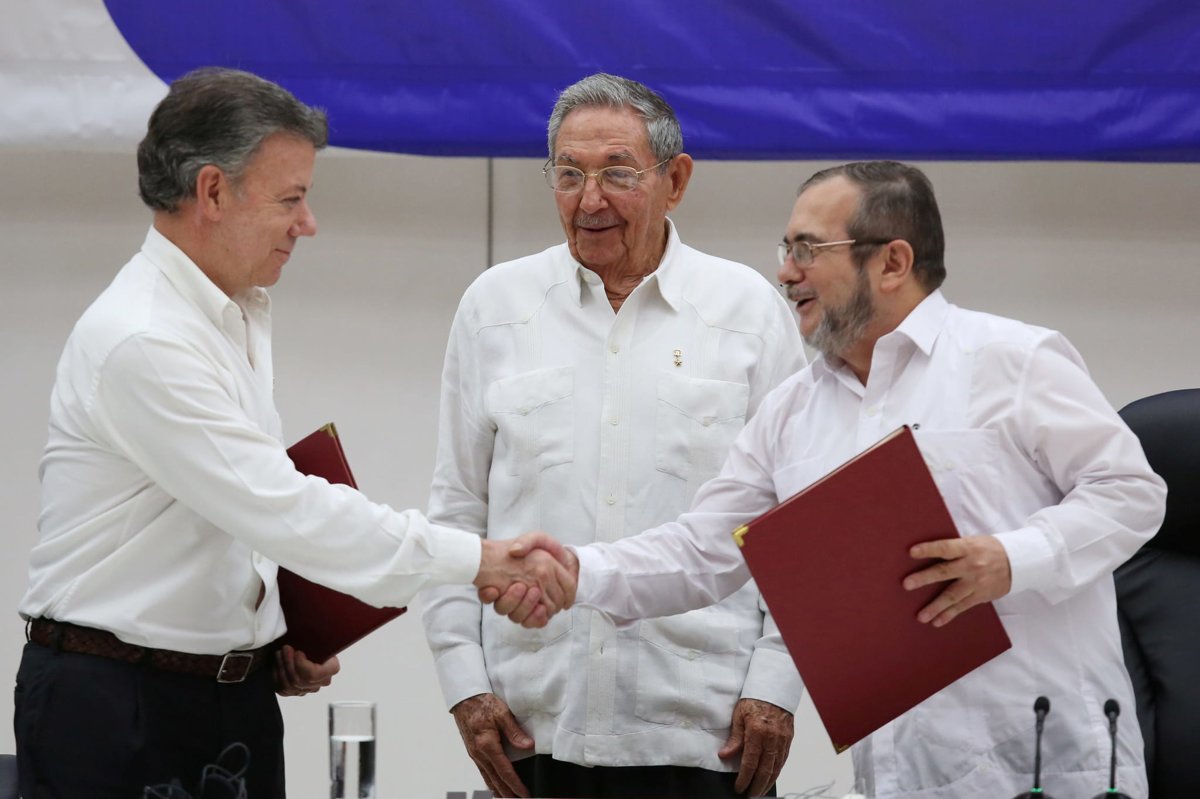 The peace agreement calls for the FARC’s roughly seven thousand rebels to gather in twenty-three hamlets across the country and turn in their arms to a UN commission. The accord also outlines a plan for the military to clear landmines scattered throughout the countryside, which have killed or injured eleven thousand people over the last twenty-five years. Santos has appealed for international support to finance development, public services, and justice institutions in former conflict areas. Most of that support has so far come from the United States. In June 2016, the U.S.
The peace agreement calls for the FARC’s roughly seven thousand rebels to gather in twenty-three hamlets across the country and turn in their arms to a UN commission. The accord also outlines a plan for the military to clear landmines scattered throughout the countryside, which have killed or injured eleven thousand people over the last twenty-five years. Santos has appealed for international support to finance development, public services, and justice institutions in former conflict areas. Most of that support has so far come from the United States. In June 2016, the U.S.

